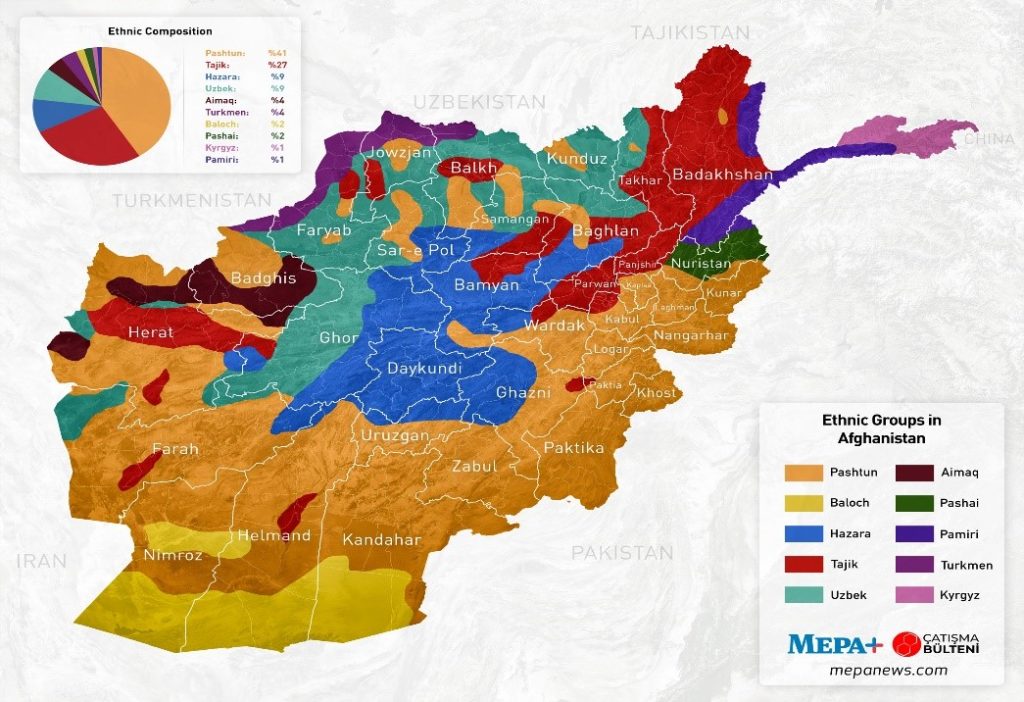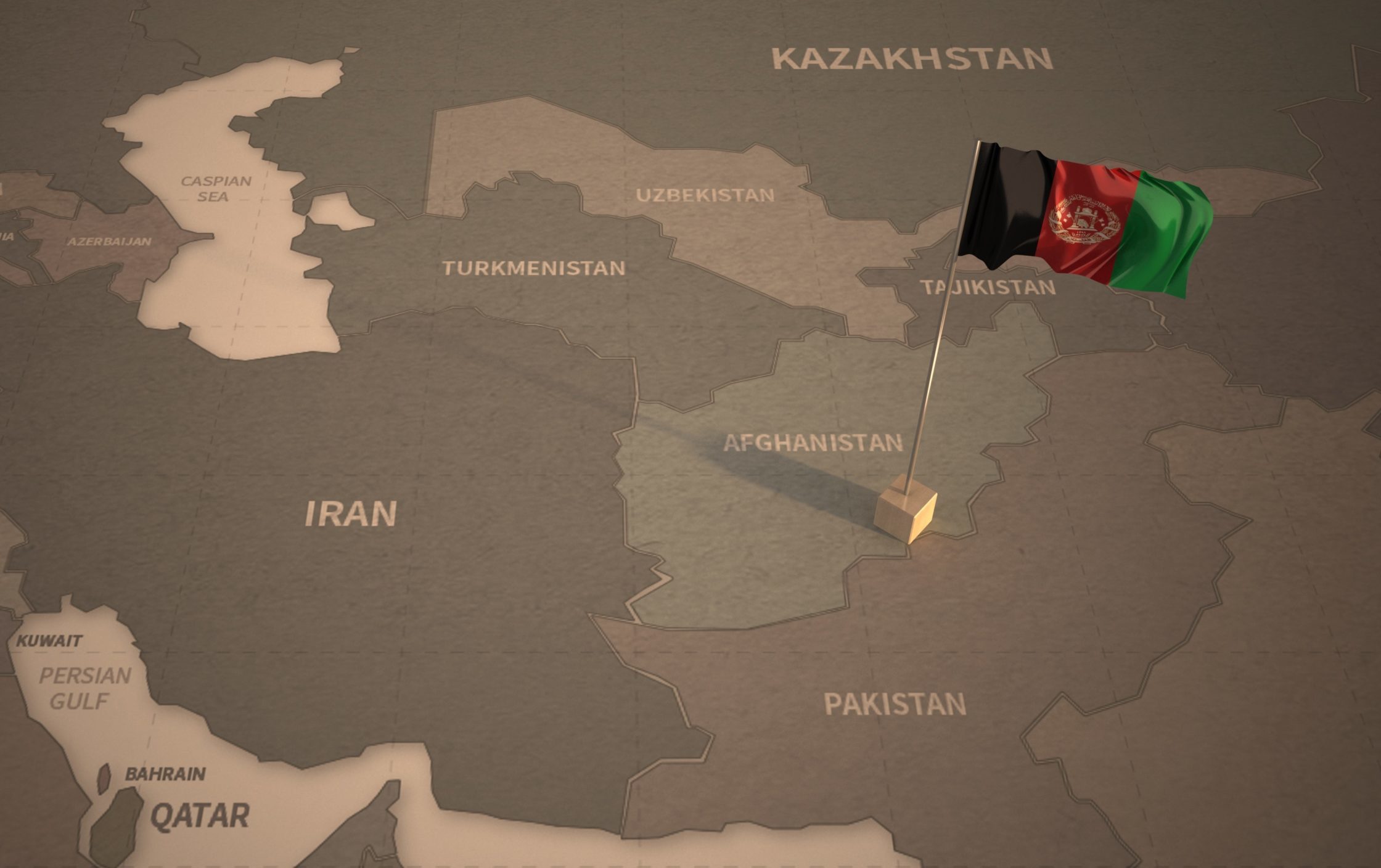With its difficult geographical terrain, exacerbated by many vulnerabilities as a result of nearly 40-year-long conflicts, disasters, earthquakes, extreme poverty, insecurity and serious socioeconomic problems, Afghanistan has historically been a source of outward migration. According to UNDP, “97 per cent of Afghans could plunge into poverty by mid-2022”.
In the weeks following the evacuation of US soldiers and the Taliban takeover of government in August 2021, Afghanistan has once again hit the headlines. The main international media debate centres on the question of where Afghan refugees will go. It’s not only European countries, but also neighbouring countries, who are worrying about a flood of migration from Afghanistan. Despite the Taliban's new moderate messages, fear persists and memories of Taliban oppression of women and minorities are still strong.
Border with different ethnic groups
More than 3.5 million people have already been internally displaced in the country because of conflicts and other factors such as climate change. 2.2 million Afghan refugees are registered in Pakistan and Iran. Afghanistan's border, which was established in the nineteenth century, resulted in some ethnic groups from neighbouring countries living near their own ethnic origin on Afghanistan border. Pashtuns live on Pakistan's border, while Tajik, Uzbek, Turkmen, and Balochs live on the borders of Tajikistan, Uzbekistan, Turkmenistan, and Balochistan (Pakistan). Furthermore, Shiite Hazaras with religious ties to Iran live in the country. The proximity of the borders has facilitated the continuation of cross-border relations. Therefore, migration from Afghanistan to Uzbekistan, Turkmenistan, Tajikistan, Iran, and Pakistan may be expected because of ethnic ties. Although Afghanistan and Turkey do not have borders, immigration to Turkey is on the agenda both as a transit country to reach Europe and as a destination country in itself.

Figure 1: Ethnic Groups Map of Afghanistan
The Hesitation of Central Asian Countries
Central Asian countries, particularly Uzbekistan, Tajikistan and Turkmenistan, those bordering Afghanistan, are concerned about radicalization and hesitate to accept refugees for security reasons. Furthermore, all three countries have increased the number of soldiers stationed at the border and improved border security. Uzbekistan, which has begun to undergo economic and social transformation under President Shavkat Mirziyoyev, has stated that it can only temporarily accept refugees for transfer to third countries. While ethnic Uzbeks in Afghanistan are likely to immigrate back to the country, due to the trans-Afghan railway project, Uzbekistan must maintain good relations with the Taliban. Although the leaders of the Taliban give the message of an inclusive government, it is impossible to convince the Shiite Hazaras and the Tajik minority. Tajikistan has announced that it will accept 100,000 refugees temporarily as a transit country. Tajikistan's Gorno-Badakhshan Autonomous Region announced that it would accept 10,000 Afghan refugees. The Panjshir Valley, which was considered de facto autonomous, is known as a focal point of anti-Taliban resistance in Afghanistan. Taliban declared the fall of Panjshir, and there has been news of ethnic Tajik civilians being killed in Panjshir. This will accelerate migration from Panjshir to perhaps Tajikistan. Turkmenistan has stated that it will not allow fleeing Afghan soldiers or ethnic Turkmen living on the border to enter the country.
Pakistan, Iran and Turkey
Almost three million Afghan refugees, half of them unregistered, have been living in Pakistan since the Soviet Union’s invasion of Afghanistan in 1979 and subsequent waves of violence and later civil war. It is expected that 700.000 Afghan refugees could flee to Pakistan, but Pakistan's support for the Taliban complicates the situation. In Iran, there are 950,000 registered Afghan refugees and at least 2 million unregistered Afghans. Many people from Afghanistan come to Iran to work as seasonal workers. Shiite Hazaras sought refuge in Iran and Pakistan from the Taliban's persecution between 1996 and 2001. The uncertain status of Hazaras who have previously migrated to Iran may lead to a new influx of refugee Hazaras to Turkey via Iran. The issue of irregular migration from Afghanistan to Turkey is not new. According to the Directorate General of Migration Management, 100.842 irregular Afghan migrants were captured in 2018 and 201.437 in 2019. Turkey has accelerated the construction of a wall along the Iranian border. Turkey is already hosting nearly five million refugees, mainly from the Syrian civil war. Turkey has announced that it will not take any more refugees.
To conclude, Afghanistan has been a country on the move for years, and the approach of the Taliban will change everything. Forecasting is difficult since the events are so recent. Afghanistan's mineral resources are another issue, estimated to be worth 1 trillion dollars, that has caught the interest of China and other countries. If we take the Taliban's moderate messages as a clue to future priorities and management style, as well as it’s economic approaches, this large current migration wave may recede. Many are not waiting to find out.
Dr Zahide Erdoğan is a visiting lecturer at the University of Ankara Yıldırım Beyazıt's Department of Sociology, Turkey. She was a COMPAS visiting academic from October 2018 to October 2019.
